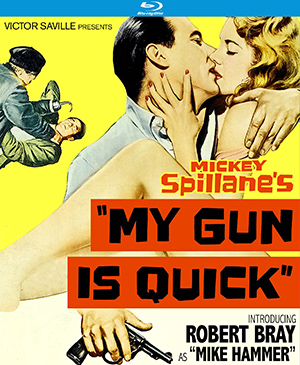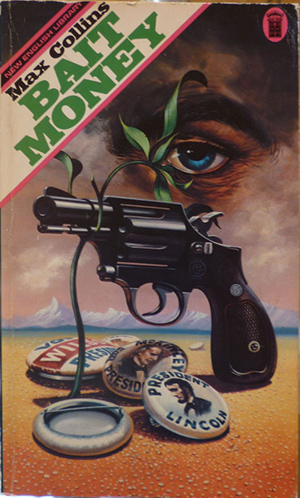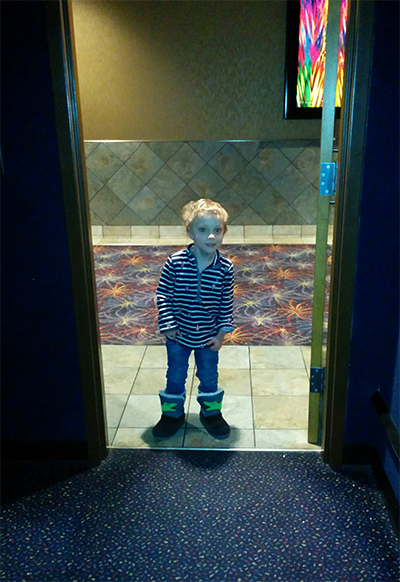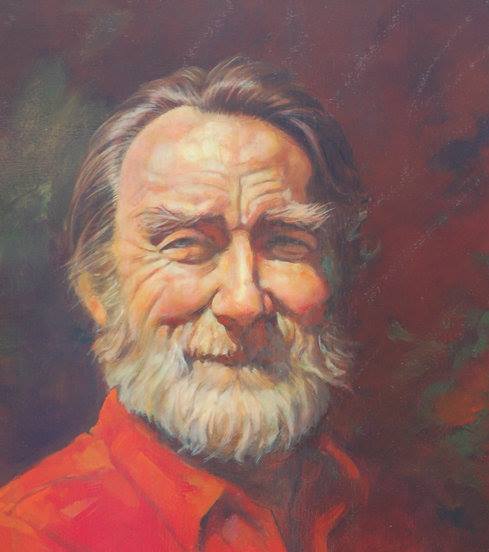I think all of you who take the time to read these updates know that I am always thinking of you. Barb and I are self-quarantining a little more vigorously than usual because a while back I was exposed to somebody who tested positive for Covid-19 (neither Barb nor I have shown any symptoms and the time period will be up soon).
But it just goes to show you (or shows to go you, as Midwestern wits used to say) how selfless it is of me to be thinking about you, and the ways you can fight your potential boredom and particularly cabin fever.
Here are ten tips for things you can do to suffer through this ordeal.
2. Read Do No Harm, the new Nathan Heller novel.
3. Write a review (preferably positive, but it takes all kinds of people to make a world) for Amazon and/or other review sites.
4. Order Girl Can’t Help It, the second Krista Larson novel.
5. Read Girl Can’t Help It, the second Krista Larson novel.
6. Write a review (preferably positive, but it takes all kinds of people to make a world) for Amazon and/or other review sites.
7. Order Masquerade for Murder, the new Mike Hammer novel.
8. Read Masquerade for Murder, the new Mike Hammer novel.
9. Write a review (preferably positive, but it takes all kinds of people to make a world) for Amazon and/or other review sites.
10. Take advantage of the sales I’m about to reveal to you.
Starting April 1 (no fooling) (as Midwestern wits ETC.) fifteen Nathan Heller titles will be available for 99-cents each as ebooks for Kindle, a sale running through/including April 30.
The titles are:
Angel in Black
True Crime
Neon Mirage
Majic Man
True Detective
Carnal Hours
Flying Blind
Damned in Paradise
Stolen Away
Blood and Thunder
The Million-Dollar Wound
Chicago Confidential
Triple Play
Chicago Lightning
Beginning 4/1/2020, you will see the promotion here.
For those of you who prefer Nook, Antiques Frame is included on a big sale online at Barnes & Noble. Normally $7.59, for two weeks it’s just $1.99. If you’ve never sampled an Antiques book, this is a cheap way to do so.
By the way, those reviews that I brazenly solicited above are important. Though the “star” averages are very good, the number of reviews so far on the three (!) new novels isn’t impressive (Masquerade for Murderonly has two reviews as I write this). These reviews are vital. Do No Harm, oddly, has a couple of really nasty (and contradictory) reviews, at least one of which strikes me as suspicious (I know it’s hard for you to believe that I could ever have gotten on the bad side of anybody, but it has happened…).
And I want to stress – and I’m not kidding about this – that any author you read regularly, or for that matter any book you read and like by a contemporary author – will benefit greatly from your Amazon/Barnes & Noble reviews. Those reviews can be short and sweet – a line or two – or as detailed as you like.
One of the pleasures of having a new book come out – and Nathan Heller novels seem to generate the most response, in this regard – are the personal emails (and even snail-type letters – remember them?) that don’t discuss the novel so much as recount certain memories and feelings it invoked. A couple of recent missives impressed me quite a bit, and I’d like to share them with you. I asked their authors permission to do so.
This is from Tom Zappe, loyal reader (and musician) from St. Louis:
I had never experienced any desire to ingest such a large gathering of greens before, but when confronted with those wedges of head lettuce [which along with the occasional potato and some corn on the cob were the only veggies my father ever ate] and the lazy susan of proprietary salad dressings in the middle of the table, I seem to have permanently lost what little self control I had acquired by that time in my life.
I can resist anything but temptation.
My paternal grandfather was a meat cutter from the old country. My mother’s joke was that she married “a son-of-a-butcher”, which was about as racy as she got in those days. Her go to swear words were “APPLE CRAP”.
Steamy.
My father did not limit himself to just eating beef, however. He never met a slab of ribs or what we in St. Louis still call “pork steaks” that he would not gleefully transfer from his grill to his dinner plate. I’m sure he had fish at least 3 or 4 times in his life as well.
Adventurous.
For my above mentioned salad debut he took my mother and me, and my sister and her fiance out to dinner. I know it was on a Friday since my future bother-in-law was studying to become an Episcopal priest. At that time the Church Of Englanders [they were one and the same in those days] in their never ending attempt to prove they were just as good as real Catholics did not permit their flock to feed at the stockyards on Fridays.
George Diamond’s served nothing that couldn’t theoretically walk to market.
Even at that tender age, I figured this was my father’s way of expressing his opinion of the dietary restrictions his future son-in-law was attempting to impose on my sister.
Subtle.
Tom was born in 1948, which is a mark of distinction in my book.
The late and lamented George Diamond’s steak house in Chicago holds many special memories for me. My parents took me there on post-Christmas trips starting when I was in junior high and later Barb and I dined there while on our honeymoon trip to Chicago. Years later we took Walter Koenig out to dinner at George Diamond’s and – this was at a Chicago Comics Convention, before any Star Trekcons I believe – traded him a great meal for insider stories from the set.
This missive is from Steve Noah, a relative of Barb’s, who is a nice and remarkable guy known for his work in economic development, politics, international trade and more. Steve grew up in Charles City, Iowa (coincidentally, my late uncle Mahlon taught band there). Steve has done considerable good work in Rwanda.
Much of the discussion in Charles City, or at least in our family, centered around an anti-osteopathic bias in our community. In retrospect it amazes me how intelligent, educated people could have such prejudice not only against osteopaths but also chiropractors and optometrists, and how much clout the AMA had, even in rural Iowa, through at least the mid-1970s.
Your novel triggered memories of reading Bailey’s book, The Defense Never Rests, shortly after it was published in 1971. Interestingly my father warmed to D.O.’s when the son of client came to Charles City to practice and to optometrists when a young optometrist moved to CC and hired Dad to help him purchase a practice. He never did warm to chiropractors.
Both of your Krista Larson novels have been fun to read, partially because of the locations. Someday I must visit the Iowa Rock and Roll Hall of Fame.
My thanks to both Tom and Steve for letting me share these reflections, and for those of you come here regularly for whatever it is I do here, many thoughtful comments are posted throughout the week, and I often reply. It’s worth checking back.
While I have been self-quarantining, holed up with my beautiful wife, plenty of food, streaming services, thousands of books, DVDs, Blu-rays and laserdiscs, I’ve had plenty of options of ways to spend my time. So I spent ninety minutes of it revisiting a really terrible movie that you may want to buy.

I actually kind of like this movie, and since one of the symptoms of the corona virus is losing a sense of taste, maybe I have the damn disease. Because I am here to tell you that My Gun Is Quick(1957) has never looked better than it does as a Blu-ray. And it’s on sale (I make absolutely nothing from this recommendation!) at the Kino site for $14.95, not the list price of $24.95.
What will you see in this adaptation of one of Mickey Spillane’s best Mike Hammer novels? Well, the first ten minutes are just like the book. The rest is a community theater version of The Maltese Falcon. The first section has a sort of fun gritty, sleazy feel, with nickel strippers and dime hoodlums, joints and flop houses and shabby penthouses, utilizing sets that defy the existence of art direction. Then comes the most boring car chase I have ever, ever seen. Robert Bray looks like Mike Hammer but he shouts all the time. Suddenly Mike Hammer meets a blonde in a bathing suit who invites him into her cottage for no reason, which has a butler (also for no reason), and then…Mike and this new doll go speed-boating! Endlessly! There’s a French sailor with a hook. A couple of fights with obvious stuntmen. A single moody wordless scene to indicate what the thing could have been, all leading to… no shock ending! Mike just turning the bad girl in to the cops (“We’re goin’ to shore”). It’s horrible.
I’ve seen it maybe ten times.
Hey, it’s Mike Hammer.
Here’s another one of those movies-you-didn’t-know-from-comics pieces about Road to Perdition– short but sweet.
And here’s a nice little essay by a writer who studied with me one summer.
Finally, I do not mean to make light of what we’re all going through. The three states where I do the most business (and have many, many friends) – New York, California, and Washington – are getting hit really hard right now. Receiving a phone call from my eye doctor telling me I’d been exposed to Covid-19 at a very controlled visit was, well, an eye-opener. For people my age, with underlying health issues, it’s a genuine threat. But healthy people much younger have died from this nightmare.
Stay home and stay safe.
Read a good book.
M.A.C.




